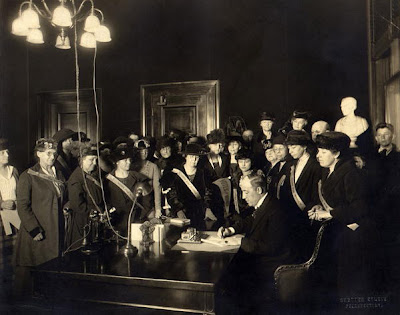Being a historian does not just mean learning what
happened in what year, but the most important thing is to analyze why something
happened, what led up to that even and what were the after effects of that
specific event. Answering all of those questions is what it means to be a
historian. Learning about History of Photojournalism was quite more interesting
to me mainly because I love history and I also love photography so combining
two of those topics created one interesting class for me. At the beginning of
the class I defined photojournalism as a career where people tell a story about
some event but instead of words they use photos. I mean there is writing that
goes with those photos but the main focus is on the pictures because that is
the first place where readers look. As the class went on I learned more and
more aspects of being a photojournalism and how they should act and approach
situations, and interact with people. The most important and interesting thing
to me that I learned in this class was the fact that there is a whole set of
official ruled called NPPA Code of Ethics. I did not know before that there
exists such a document that is strictly enforced among photojournalists. There
are many rules in that code but the one that surprised me the most was the fact
that images cannot be edited before there are to be published in any magazine
or newspaper. Professor told us that there have been a lot of people that were
fired from their job as a photojournalist because they altered their work in
some way.
The photos that are posted on this blog were taken by me
during the trip to Boston that I recently took. I have recently been introduced
to some of the work done by an architectural photographer named Christian Richters. He is one of the more famous
architectural photographers. Some of the photos done by him are very inspiring
to me. Without even noticing it I took a lot of photos of building in downtown
Boston. Christian is known for taking abstract photos of buildings all around the
world. My dream one day is to go out and travel the world with my camera and
just take photos of interesting things that I encounter. Like the life-styles
of different people, their houses where they live, the clothes they wear and
the food they eat. I feel that it would make me a better person if I learn to
connect with people whom I never met before.
Image by: Vita Dukan
Image by: Vita Dukan
Image by: Vita Dukan
Image by: Vita Dukan
Image by: Vita Dukan
Image by: Vita Dukan
Image by: Vita Dukan
Image by: Vita Dukan
Image by: Vita Dukan
While looking at the Photojournalistic Profiles posted from the previous
module I noticed a lot of interesting facts about different photojournalists
from many decades in history. Some of the more interesting facts that stood out
were about a photographer named Robert Capa presented in Crystal Tolpa’s blog.
She writes about him that “Because of his proximity to the victim and the
timing of the capture there was a long controversy about the authenticity of
his photographs”. I found this very amusing that this guy was so passionate and
motivated by capturing the true meaning of war that he even put his life at
risk by getting so close to the action and photographing. Lucille France did
her profile on a photographer named Lewis Hine. I found this photojournalist very
interesting because of the work that he did with his camera. During the era
when he was living the cameras that were in use were wet plate cameras. Using
these cameras required a lot of technique and knowledge about the subject
matter. Lewis Hine was shooting photos blind without knowing the resulting
focus or the framing of the photo. If I were to do that kind of photography
where I would shoot blind I would probably quit after the first day since I am
so used to taking a photo and looking at the back of the camera or a phone and
seeing the result. Lewis on the other hand worked hard to create such amazing
images that are still popular today. Another photojournalist who stood out to
me was a guy named Bill Biggart covered in Melissa’s blog. What intrigued me
the most about him was that he tried to be everywhere around the world where
action was taking place. Melissa provided a short list of all the events that
Bill photographed. He was so passionate about photography that he died at his
job when he was killed by the collapse of the World Trade Centers in New York
on 9/11. That kind of passion about a job is something that I want to have.






































